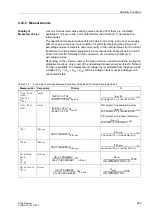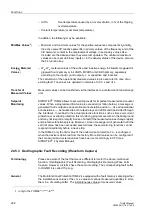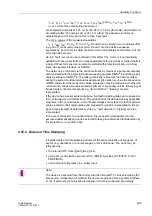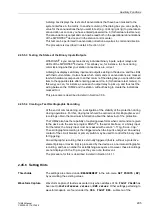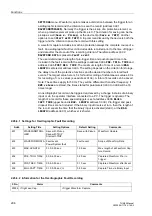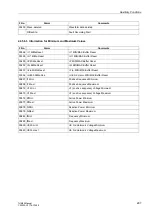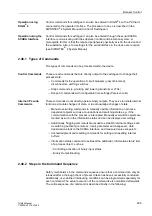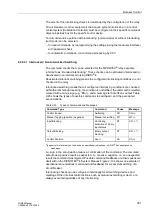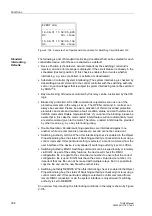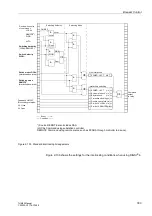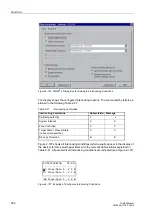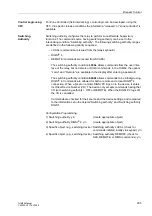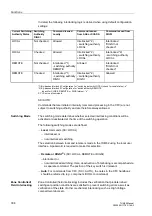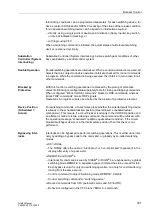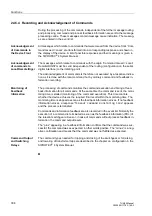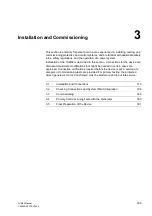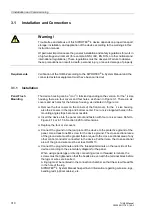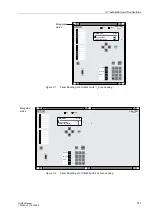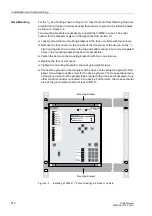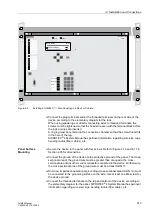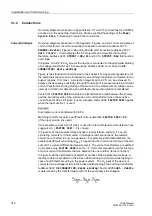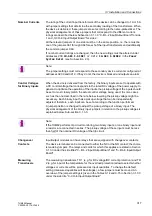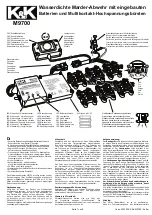
Functions
302
7UM62 Manual
C53000-G1176-C149-3
Figure 2-134 Example of an Operational Annunciation for Switching Circuit Breaker Q0
Standard
Interlocking
Defaults
The following is a list of Standard Interlocking Conditions that can be selected for each
controllable device. All of these are enabled as a default.
•
Device Position (scheduled vs. actual comparison) the switching command is
rejected, and an error message is displayed, if the circuit breaker is already in the
scheduled (desired) position. (If this check is enabled, then it works whether
interlocking, e.g. zone controlled, is activated or deactivated.)
•
Substation Controller (System Interlocking) The system interlocking is checked by
transmitting a local command to the central controller with the switching authority
set to = Local. Switchgear that is subject to system interlocking cannot be switched
by DIGSI
®
4.
•
Bay Interlocking: All devices controlled by this relay can be interlocked by the CFC
logic.
•
Blocked by protection: A CLOSE-command is rejected as soon as one of the
protective elements in the relay picks up. The OPEN-command, in contrast, can
always be executed. Please be aware, activation of thermal overload protection
elements can create and maintain a fault condition status, and can therefore block
CLOSE commands Double Operation Block: If you cancel the blocking, please be
aware that in this case the motor restart inhibit feature will not automatically reject
a restart command given to the motor. Therefore, a restart inhibit must be provided
by other means, e.g. by a bay interlocking using.
•
Double Operation: Parallel switching operations are interlocked against one
another; while one command is processed, a second cannot be carried out.
•
Switching Authority LOCAL: When this interlocking check is enabled in the Object
Properties dialog box, the status of Switching authority is checked prior to issuing a
control command. If this particular setting is selected, a control command from the
user interface of the device is only allowed if switching authority is set to LOCAL.
•
Switching Authority DIGSI: Switching commands can be issued locally or remotely
via DIGSI. As part of the safety features, the device will check the DIGSI
configuration file in regard to the virtual device number to ensure that the correct
configuration file is used. DIGSI must have the same virtual device number. It is
important that one file can not be reused with multiple relays. But it is possible to
copy the file and use the new file with another relay.
•
Switching Authority REMOTE: When this interlocking check is enabled in the Object
Properties dialog box, the status of Switching authority is checked prior to issuing a
control command. If this particular setting is selected a control command from a
remote DIGSI connection or via the system interface is only allowed if switching
authority is set to REMOTE.
An overview for processing the interlocking conditions in the relay is shown by Figure
2-135.
EVENT LOG
---------------------
19.06.01 11:52:05,625
Q0 CO+ close
19.06.01 11:52:06,134
Q0 FB+ close


